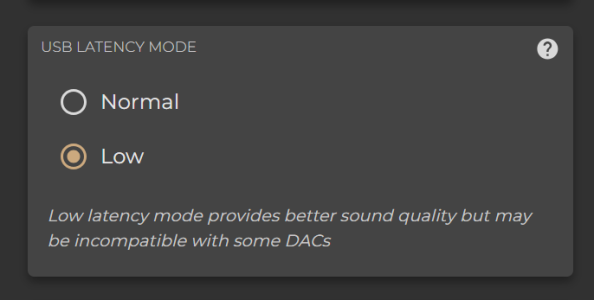Hi everyone,
For those connectin their Innuos systems to USB DACs, there is a parameter in System > Settings > Audio called USB Latency Mode:

By default, this parameter is set to "Normal" as this is a more safe buffer for DACs to operate. However, setting to Low brings an audible difference in sound quality in our experience. In the past year or so I haven't tried a DAC that didn't benefit from it and I had no issues, to the point we are considering setting "Low" as the standard.
Do give that a try and let me know what you think. If you start hearing "pops" during playback then you are having buffer underruns with your DAC and choosing Normal should resolve that.
Hope this is useful!
Nuno
For those connectin their Innuos systems to USB DACs, there is a parameter in System > Settings > Audio called USB Latency Mode:

By default, this parameter is set to "Normal" as this is a more safe buffer for DACs to operate. However, setting to Low brings an audible difference in sound quality in our experience. In the past year or so I haven't tried a DAC that didn't benefit from it and I had no issues, to the point we are considering setting "Low" as the standard.
Do give that a try and let me know what you think. If you start hearing "pops" during playback then you are having buffer underruns with your DAC and choosing Normal should resolve that.
Hope this is useful!
Nuno

